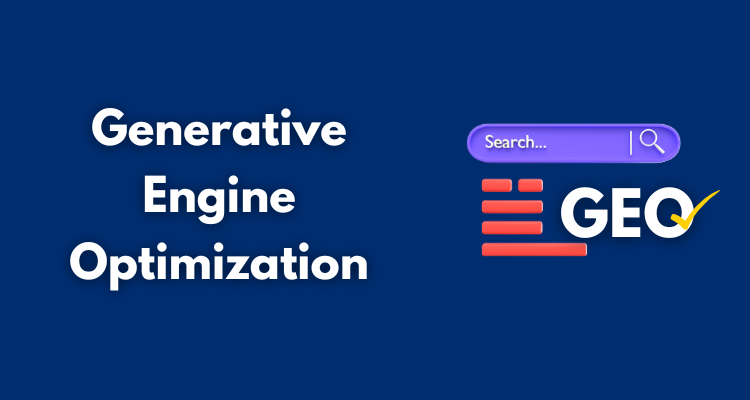Generative engine optimization is a collection of strategies aimed at improving a website’s exposure in AI-powered search engines (ChatGPT, Perplexity, Google’s AI Mode, and so on). Its purpose is to make content machine-readable, extractable, and credible enough to be used by large language models (LLMs) to answer a specific user question.
While GEO initiatives are still in their infancy, they primarily focus on techniques such as:
- Aligning material with AI models’ natural language processing (NLP) processes to facilitate parsing.
- Restructuring material to better align with user searches and search intent.
- Improving brand authority to demonstrate credibility to AI engines.
I’ll go over the precise GEO strategies you should use later in this tutorial. But first, let us explain why you should do it in the first place.
Table of Contents
ToggleHow Is GEO Different from SEO?
The primary distinction between GEO and regular search engine optimization (SEO) is in the focus. While SEO seeks to get pages to the top of Google’s search engine results pages (SERPs), GEO focuses on getting them into the citation fields of various AI engines.
As a result, it either expands or entirely replaces some of the SEO strategies we’ve traditionally utilized to increase organic traffic.
If your digital marketing Covington campaign already includes SEO, integrating GEO can help position your brand in front of the next wave of AI-driven visibility.
7 Tips for an Effective GEO Strategy

To increase your chances of appearing in AI-powered search engines, follow these guidelines:
1. Answer Contextually Rich Queries
To rank on generative AI systems, you must abandon keyword matching and instead target long-tail searches containing specialized information. This is because fewer consumers are looking for phrases these days; instead, they are asking inquiries or providing detailed instructions.
2. Give Direct Responses Before Elaborating
When answering questions, always begin with a direct response. Use 1–2 sentences to directly address the query, followed by any extra information that the user may benefit from. This regulation has been in place for quite some time, but it is now more necessary than ever.
3. Plan Content for LLMs
Well-structured content bridges the gap between these two processes, allowing LLMs to easily extract the relevant information. The nice aspect is that the formatting principles to follow are quite similar to those we use to boost content readability. The main rules to follow are:
- Using bullet points, lists, and tables to showcase important information concisely.
- Developing a logical content hierarchy with headings (H1, H2, etc.).
- Using brief, valuable paragraphs.
- Breaking up the text with pertinent visual and interactive elements (pictures, embeds, etc.).
You can perform any or all of the following, depending on your topic and goal, and doing it well can result in you being referenced even if you don’t explicitly match the query or keyword.
4. Publish Multimedia Content
Aside from assisting AI platforms in better understanding your material, they may also include images in their answer. Beyond written text, you should optimize for multimodal signals in generative engines, particularly for themes that can benefit from pictures.
5. Increase Brand Authority
I’m sure you’ve heard this advice before, as authority and credibility have become increasingly crucial since the shift away from techniques such as keyword stuffing. Your online reputation has a direct impact on the likelihood of being cited in AI responses.
All big GenAI businesses make significant investments in the credibility and accuracy of AI replies, thus trustworthiness will continue to be a key ranking element.
6. Engage Your Audience Online
Traditional search engines have moved beyond simply looking at a website’s content to evaluate its relevance—and AI models are taking this even further. They can scan massive amounts of data from all around the internet in seconds to establish a page’s reliability more correctly.
To accommodate this, you should promote as many brand-related conversations as possible on appropriate forums, groups, and social media platforms.
7. Show Credibility via Quotes, Data, and Statistics
It is not always necessary to publish first-party facts or original research to demonstrate credibility. While doing so is preferable, using other credible data sources demonstrates to AI algorithms that the statements you make are supported by authoritative facts.
Key Takeaways
Generative engine optimization (GEO) is the method of optimizing content for artificial intelligence search engines. The goal is to be referenced and/or cited as part of generative AI platforms’ responses to relevant queries.
Effective GEO allows you to go beyond typical optimization strategies to accommodate for the expanding use of AI-powered engines. It can boost your brand’s presence across AI platforms while also driving highly qualified traffic.
Unlike traditional SEO, which is primarily concerned with single search engines, GEO focuses on numerous big AI-powered platforms.
And for brands already active in digital marketing Covington, GEO provides a natural next step to strengthen authority, visibility, and AI discoverability in a rapidly evolving digital landscape.









